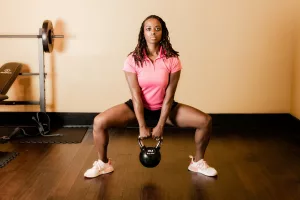Incorporating exercise regimens that focus on maintaining strength and flexibility becomes increasingly important as we age. These two components are vital for overall health and quality of life in later years, helping to reduce the risk of falls, maintain independence, and improve daily functioning. As we grow older, our muscles tend to weaken, and our joints become stiffer, making it more challenging to perform simple everyday tasks. By prioritizing strength and flexibility exercises, older adults can enhance their physical capabilities and maintain a higher level of functionality well into their senior years.
Understanding the Aging Body
Before diving into specific exercise regimens, it’s crucial to understand how aging affects our muscles and joints. Sarcopenia, the age-related loss of muscle mass, typically begins in our 30s and accelerates after 60. Meanwhile, joint cartilage may wear down, and tendons can become less flexible, all contributing to stiffness and reduced range of motion. These changes are natural, but they’re not irreversible. Regular physical activity can significantly slow these processes.
Strength Training for Aging Adults
Strength training exercises, such as lifting weights or using resistance bands, are crucial for preserving muscle mass and bone density in older adults. By engaging in regular strength training regimens, seniors can combat age-related muscle loss and maintain a strong and resilient body. Strong muscles not only support overall mobility but also help prevent injuries and fractures by providing better support to the skeletal system. Additionally, maintaining muscle mass can contribute to a higher metabolism and better weight management, which are essential for overall health as we age.
Types of Strength Training
- Free Weights and Machines: Using dumbbells or weight machines can help target specific muscle groups. Start with lighter weights and gradually increase as strength improves. A simple regimen might include exercises like bicep curls, tricep extensions, and leg presses.
- Resistance Bands: These are versatile and can be used anywhere. They provide a safe and effective way to improve strength, especially for those with joint concerns. Exercises can include seated rows, chest presses, and lateral leg lifts.
- Body Weight Exercises: These are perfect for those who prefer not to use equipment. Exercises like push-ups (modified as needed), squats, and lunges can be done at home and still build significant strength.
Practical Tips for Strength Training
- Consistency Over Intensity: Aim for two to three days a week of strength training exercises. Consistent activity is more beneficial than sporadic, high-intensity workouts.
- Focus on Form: Proper form is crucial to prevent injuries. Consider hiring a trainer for a few sessions to learn the correct techniques.
- Listen to Your Body: Start slow and pay attention to how your body responds. If an exercise causes pain, stop immediately and consult a professional.
Flexibility and Balance Exercises
Flexibility and balance exercises, including yoga and tai chi, play a key role in enhancing mobility and reducing the risk of injuries in older individuals. These exercises focus on stretching and improving the range of motion, promoting flexibility and stability in joints and muscles. Improved flexibility can help older adults maintain their independence by allowing them to perform daily activities with greater ease and reduced discomfort. Enhanced balance can also prevent falls, which are a significant risk for aging individuals and can lead to severe consequences.
Yoga and Tai Chi
- Yoga: This practice improves flexibility, balance, and strength. Poses such as the Mountain Pose, Tree Pose, and Warrior II can enhance stability and strength. Many community centers offer classes tailored for seniors.
- Tai Chi: Known for its gentle, flowing movements, Tai Chi improves balance and reduces fall risk. It’s a low-impact exercise that enhances coordination and mental focus, with forms like “Grasp the Bird’s Tail” and “Wave Hands Like Clouds.”
Stretching Exercises
Incorporate stretching into your daily routine. Focus on major muscle groups, holding each stretch for at least 30 seconds. This can improve flexibility and joint health, making daily activities easier.
- Neck and Shoulder Stretch: Gently tilt your head to one side, using your hand to apply slight pressure. Hold for a few seconds and switch sides.
- Hamstring Stretch: Sit on the edge of a chair, extend one leg, and reach towards your toes. This stretch helps maintain lower body flexibility.
Cardiovascular Activities for Aging Well
Incorporating cardiovascular activities, such as walking, swimming, or cycling, into an exercise routine can boost heart health, improve endurance, and enhance overall fitness levels in older adults. Cardiovascular exercises also help to maintain a healthy weight and reduce the risk of chronic diseases. Aerobic activities promote cardiovascular function, increase lung capacity, and improve circulation, which are crucial for maintaining vitality and vitality as we age. Regular cardiovascular exercise can also contribute to a positive mood, mental clarity, and overall well-being.
Choosing the Right Activity
- Walking: A simple yet effective cardiovascular exercise. Aim for 30 minutes a day, five days a week. Use a pedometer or fitness tracker to measure steps and set goals.
- Swimming: Excellent for those with joint concerns, swimming provides a full-body workout without the impact. Many pools offer senior swim classes.
- Cycling: Stationary bikes are a great option for those with balance issues. Cycling strengthens the heart and leg muscles while being gentle on the joints.
Tips for Cardiovascular Health
- Gradual Progression: Start with short sessions and gradually increase the duration and intensity.
- Stay Hydrated: Drink plenty of water before, during, and after exercise to stay hydrated.
- Monitor Heart Rate: Use a heart rate monitor to ensure you’re exercising within a safe range. Consult with a healthcare provider to determine your optimal heart rate zone.
Combining Components for Optimal Results
For the most effective results, a well-rounded exercise regimen for older adults should include a combination of strength training, flexibility exercises, and cardiovascular activities. Incorporating variety into the routine can help target different muscle groups, improve overall fitness, and enhance physical well-being in later life. By combining these elements, older adults can achieve a balanced fitness level that supports their overall health and wellness, allowing them to lead an active and fulfilling lifestyle well into their golden years.
Sample Weekly Routine
- Monday: Strength training (30 minutes) + Balance exercises (15 minutes)
- Tuesday: Cardiovascular activity (30 minutes)
- Wednesday: Yoga or Tai Chi class (60 minutes)
- Thursday: Rest or gentle stretching
- Friday: Strength training (30 minutes) + Cardiovascular activity (15 minutes)
- Saturday: Outdoor walking (45 minutes)
- Sunday: Rest and recovery
Consulting with a Professional
Before beginning any new exercise regimen, it is important for aging adults to consult with a healthcare provider or a fitness professional to ensure that the chosen activities are safe and appropriate for their individual needs and abilities. Tailoring an exercise regimen to suit specific goals and limitations can help older adults reap the benefits of a consistent and sustainable fitness routine. Professionals can provide guidance on proper form, intensity levels, and progression, ensuring that older adults exercise safely and effectively to achieve their desired health outcomes.
Finding the Right Professional
- Certified Trainers: Look for trainers who specialize in senior fitness. They should have experience and knowledge about the physical changes associated with aging.
- Physical Therapists: If recovering from an injury or dealing with chronic pain, a physical therapist can create a therapeutic exercise plan.
- Community Resources: Many senior centers offer free or low-cost fitness classes led by trained professionals.
Overcoming Common Barriers to Exercise
It’s not uncommon for older adults to face barriers when trying to maintain an active lifestyle. Understanding and addressing these challenges can make it easier to stay consistent.
Lack of Motivation
- Find a Buddy: Exercising with a friend can make activities more enjoyable and provide accountability.
- Set Realistic Goals: Break goals into smaller, manageable milestones. Celebrate achievements to stay motivated.
Physical Limitations
- Adapt Exercises: Modify activities to accommodate limitations. Chair exercises can be a great alternative for those with mobility issues.
- Rest and Recovery: Allow sufficient time for recovery to prevent overuse injuries.
Environmental Challenges
- Indoor Alternatives: On days when the weather isn’t favorable, consider indoor walking at malls or using home workout videos.
- Safety First: Ensure the exercise area is safe, well-lit, and free of obstacles to prevent falls.
The Psychological Benefits of Exercise
Staying active doesn’t just benefit the body; it’s excellent for mental health too. Exercise releases endorphins that can improve mood and reduce feelings of depression and anxiety. Social aspects of group exercises can also reduce loneliness and enhance emotional well-being.
Real-Life Success Stories
Let’s take a look at some inspiring examples of seniors who have embraced exercise and reaped the benefits.
- Grace, 78: After a fall, Grace began a Tai Chi class. Not only did her balance improve, but she also found a new community of friends, enhancing her social life.
- Thomas, 82: Diagnosed with osteoporosis, Thomas started weight training under the guidance of a professional. His bone density and overall strength improved significantly, allowing him to continue gardening, a hobby he loves.
- Eleanor, 75: Eleanor joined a local walking group. She initially struggled but gradually increased her stamina. Now, she enjoys regular hikes and has lost weight, which has made her feel more energetic.
By sharing these stories, we highlight the tangible benefits of exercise in later life and encourage others to embark on their own fitness journeys.
The Future of Fitness for Older Adults
As awareness grows about the importance of fitness in aging, more resources and innovations are becoming available. Virtual classes, wearable fitness technology, and community programs are making it easier than ever for seniors to stay active.
By integrating these varied components and insights into a comprehensive fitness plan, older adults can enjoy an enriched quality of life, maintaining both independence and vitality as they age.



